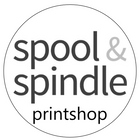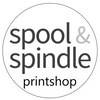Why Choose A0 Pattern Printing?
Whether you’re new to garment sewing or consider yourself a seasoned sewist, there is nothing more exciting than hitting “download” on a new sewing pattern PDF you may have come across on Etsy, Instagram, or the website of your favourite pattern designer.
We all know the joy of losing ourselves in a project, spending hours crafting away amid a hoard of projects we hope one day will find their way to completion. And there is no denying the magical feeling that comes from creating works of art that you or a loved one can literally wear, all thanks to the gentle forward nudge of fingertips on fabric beneath the piston-thumping whirr of a Singer’s foot.

But before that can happen, the first step is printing that pattern you just bought.
Printing your pattern PDFs at home might make sense, but the last thing any sewist wants is to come up against pages where one piece of the pattern fits a grizzly bear, and another piece fits a gnome! Or to realize after spending all that time taping paper together that your printer scaled the pieces incorrectly.
Printing your PDFs at home can bring a whole host of other issues too, such as ink smudging, ink running out in the middle of your print, paper jams, and uneven taping.
So, what’s the answer?
Enter stage left: a professional-quality print shop, one that specializes in printing PDF sewing patterns on extra-wide or A0 paper. If you don’t know, A0 is a standard size for sewing patterns, 36” by 48” (or 91 cm by 124 cm, for those who prefer metric). Think the size of blueprints for a house remodel you might see on a show like Property Brothers. And for even bigger pattern pieces, some patterns come with a CopyShop or Wide Format version, 36” wide by up to several hundred inches long!
Let’s dive in, shall we? Getting patterns professionally printed on A0 paper comes with a number of benefits, including overall convenience.

First and foremost, is the size! A0 printing especially comes in handy for larger and more complex patterns with pieces that span many pages, such as complex elements used to bring cosplay dresses or winter coats to life. The simple convenience of being able to see a whole pattern on a single large sheet, instead of multiple 8” x 11” sheets taped together, can make all the difference when it comes to visually understanding what you’re working with, true to the pattern’s intended dimensions.
Using extra large paper removes the mental and physical burden that comes with tediously matching sections together like a jigsaw puzzle. Print-at-home patterns are not all created equal, and some don’t make it easy to figure out the right page order! And if you don’t have a large table at the right height for laying out the puzzle pieces, it can be horrible for your knees and back to painstakingly fit and tape those pages together. Really, all you want is to get to the fabric!
Printing on A0-size paper means that your patterns will be faithfully reproduced without a need to worry about the additional steps that come with “Frankensteining” multiple home-printed pages together at the risk of diminished ink quality, sizing issues, or any other errors that may occur during the assembly process.
Opting for this route naturally saves a sewist an arm and a leg in time that could be better used working on what brings you joy. Simply lay that pattern down across a single surface–be it your floor or work table–and cut out your pieces without a second thought.
Speaking of an arm and a leg: while printing at home might seem the most cost-effective route, something to consider is the amount of paper and ink that winds up in the trash on account of poor quality prints, technical hiccups, and the sheer volume of resources that will add up over time. The last thing you want is to be swimming in ink-smeared scrap printer paper.
Understandably, something to consider is cost; but printing your patterns professionally on A0 sheets can be more cost-effective than you might think. While yes, opting for a professional pattern printer may come with upfront costs, depending on who you go with, what you’re paying for at the end of the day is access to high-end equipment that is built to produce high quality pattern printings that are both crisp and accurate to scale.
This might seem expensive at first, but the overall overhead that goes into printing at home (have you SEEN the prices of printer paper and ink cartridges these days??) is spread across a wider breadth when prints are done professionally. In addition, a printer who knows how to efficiently print sewing patterns can be much cheaper than most full-service printers, who charge poster rates for line drawings.

At Spool & Spindle, we pride ourselves on delivering great quality and customer service. We check the calibration squares for you, and make sure we print everything at the correct scale. When PDF patterns have layers for different sizes, we can turn off the sizes you don’t want and print only the ones you need, which makes it easier for you to see just the right lines when you go to cut your fabric. And when a pattern has multiple options, views, or cup sizes, we can sometimes print only the pages that you need for the version that you plan to sew.
Printing with a printshop also gives you great quality. Remember the days of tissue paper patterns that rip after a single use? This paper is 20 lb bond, similar to the weight you use in a home printer, so it’s sturdy enough to use many times. Whether you cut out a single size of the pattern to use over and over, or trace onto your own tissue paper for each use, these pattern prints will last you through many garment projects. That helps you get the most value out of your pattern purchase. Patterns that have been taped together are often hard to store and flimsy at the tape lines, while large-format patterns can be rolled back up or folded for easy storage.
If that alone hasn’t convinced you that Spool & Spindle Printshop is right for you, there’s something else to consider before you head off to the nearest local printer. Be warned that not all copy shops are equal. Not all their employees understand (or even care) about maintaining the integrity of your pattern, which could lead to mistakes that end up costing you more in the long run.
In our experience, generic print shops don’t realize how much ink is needed to print sewing pattern line drawings, so they charge the same rate for your pattern as they would for a high quality photograph, anywhere from $10 to $50 per page! We’ve priced our pattern printing service based on the typical sewing pattern, saving you money.

In many ways, a sewing pattern is like a magical recipe that you can use to express yourself. Sometimes that’s an expression of your own unique style with clothing for yourself, other times it’s an expression of love for your friends and family as you sew for others, and quite often it’s an expression of your creativity, in the wearable works of art that you make. We want to help you make that process a little easier. Sending your PDFs off to a printing company that cares about crafting and specializes in sewing patterns (like Spool & Spindle!) will make turning your brand new PDFs into amazing garments and finished projects an experience that goes to the next level.
If you are ready to get started, check out our step-by-step guide to submitting PDF prints on our website! Or go straight to the Printing page to start uploading your patterns.
As always, email us at info@spoolandspindle.com if you have any questions!

